Arduino is a new system based on the AVR architecture with more RAM and ROM than the 8051 microcontroller, and is a computing platform that can be used to build electronic projects. Arduino is often used in IoT products, while microcontrollers are often used in automation products.
A working computer contains the following parts: a central processing unit CPU (for computing and control), random memory RAM (for data storage), memory ROM (for program storage), and input/output device I/O (serial port, parallel output port, etc.).
In a personal computer (PC) these parts are divided into a number of chips that are mounted on a printed circuit board called the motherboard.
In a microcontroller, these parts are all done in one integrated circuit chip, so it is called a microcontroller, and there are some microcontrollers in addition to the above-mentioned parts, but also integrated other parts such as analog/digital conversion (A/D) and digital/analog conversion (D/A).
Arduino is a microcontroller board and it is a computing platform for building electronic projects. In fact, one of the advantages of designing Arduino is that it can handle the low-level electronic details for the project.
The Arduino ecosystem has three main components: the Arduino board, external hardware, and the Arduino IDE. They work together to enable you to do anything with Arduino. You can program the device to perform any operation like controlling lights or reading sensors. It could processe inputs and sends outputs. An Atmel microcontroller unit is the heart of every Arduino.
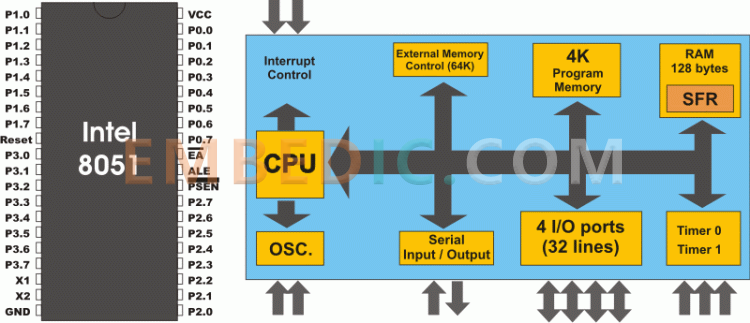
The 8051 microcontroller is an 8-bit family of microcontrollers and is one of the most popular microcontrollers in widespread use. Intel introduced the 8051 microcontroller in 1980, and since then, the 8051 family of chips has been used as the basis for thousands of products. Other companies, including Philips, Fujitsu, Siemens, Dallas Semiconductor, OKI and Matra Harris, also produce the 8051 family of chips.
Several companies have extended the 8051 family by offering compatible chips with additional features. 8052, an enhanced version of the 8051, also has its own family of variants. 8051 models are collections of 8- and 16-bit registers and 8-bit memory locations that can be made to run together using software instructions included in the design.
There are many Arduino models, choosing an Arduino for the right project is half the battle. Here we look at the most common Arduino boards and how to distinguish between them.
To distinguish so many boards and pick the right Arduino, look at the following three main aspects: performance, features, and size.
Performance: i.e. processor memory, clock frequency, and bit width. Hardware processing power usually depends entirely on the chip of this board, while the chip also limits the software that can be run.
Features: This includes everything on the board except the microprocessor, such as input/output pins, integrated components (buttons, LEDs, motor drivers, etc.) and the type and number of interfaces available (USB, Ethernet, etc.).
Size: Due to the nature of the project, the size and weight left for the electronic part varies greatly. For example, to make a tracker for a dog, it must be at least 10*5*5cm in size and 200g in weight if you use a Mega and a battery box plus an expansion board.
1. Arduino Uno
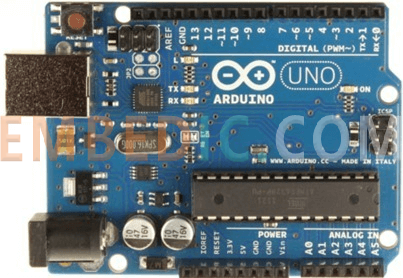
2. Arduino Leonardo
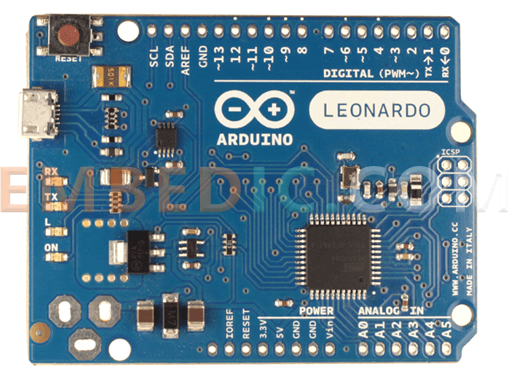
3. Arduino Due
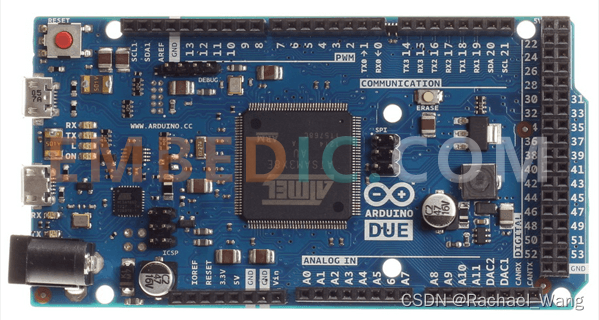
4. Arduino Micro
5. LilyPad Arduino
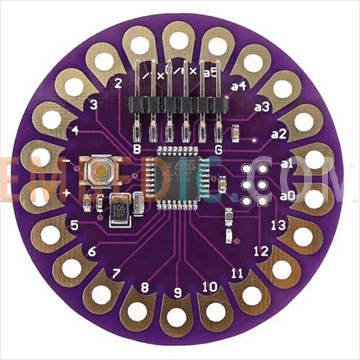
6. Arduino Nano
7. Arduino Mega 2560
8. Arduino Ethernet
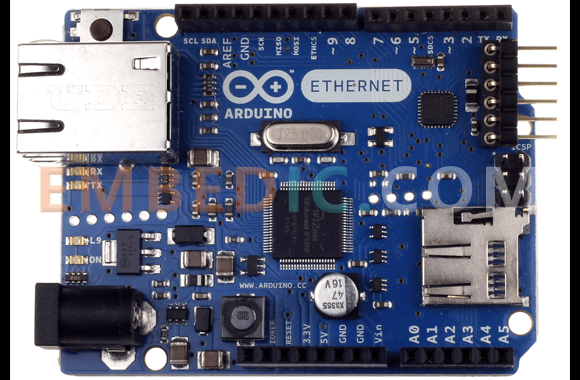
The 8051 is just a single microcontroller that belongs to the 8-bit microcontroller family. The main purpose of a microcontroller is to control the operation of a machine using a fixed program that is stored in ROM and does not change during the life of the system. Arduino, on the other hand, is a microcontroller board with pre-tested software and hardware libraries and its own integrated development environment (IDE). Arduino is like a single component of a computer that is programmed to perform repetitive tasks and is used to develop electronic projects.
Power Supply
The 8-bit Intel 8051 operates from +5 V to a maximum of 6.6 V. The 8051 microcontroller should operate successfully with a constant regulated power supply.
The Arduino can accept voltages between 6 V and 20 V (7-12 V recommended) via the DC barrel jack connector or the input Vin pin. Built-in 5V and 3.3V regulators; 5V for all logic on the board, 3.3V to accommodate 3.3V shielding and external circuitry.
Memory Space
The 8051 microcontroller has a total of 128 bytes of RAM with addresses allocated from 00 to 7FH. These 128 bytes are divided into three groups: a total of 32 bytes (00 to 1F Hex) are reserved for register sets and stacks; a total of 16 bytes (20H to 2FH) are used for bit-addressed read/write memory; and a total of 80 bytes (30H to 7FH) are used for read/write storage. It can have up to 64K bytes of external memory.
The Arduino Uno has flash memory with only 32K bytes and SRAM is 2K bytes. It also uses another form of memory, the EEPROM, to store long-term information, but it is slower than SRAM.
Applications
The 8051 was originally developed for embedded systems, but has since been extended to industrial control applications. They are often used in automatic control products such as car engine control systems, remote controls, appliances, power tools, office machinery, and toys.
Arduino can read sensor data, it can also control components such as lights, motors, and garage doors. Arduino projects are often used to build Internet of Thinks (IoT) applications. It is also used for home automation systems and a wide range of innovative applications, from robotics and lighting to gardening and gaming.
Manufacturer: Texas Instruments
IC DSP FIX/FLOAT POINT 841FCBGA
Product Categories: DSP
Lifecycle:
RoHS:
Manufacturer: Texas Instruments
IC DSP FIX/FLOAT POINT 361NFBGA
Product Categories: DSP
Lifecycle:
RoHS:
Manufacturer: Analog Devices
IC DSP 400MHZ 1.4V 120LQFP
Product Categories: DSP
Lifecycle:
RoHS:
Manufacturer: Texas Instruments
IC DSP FIX/FLOAT POINT 841FCBGA
Product Categories: DSP
Lifecycle:
RoHS:
Looking forward to your comment
Comment